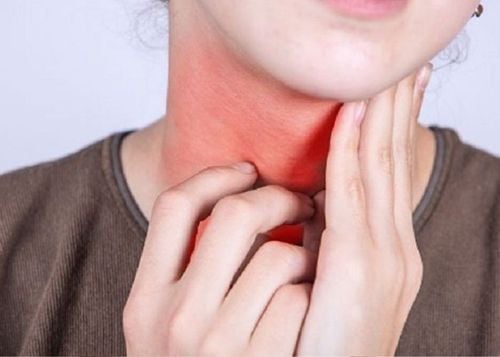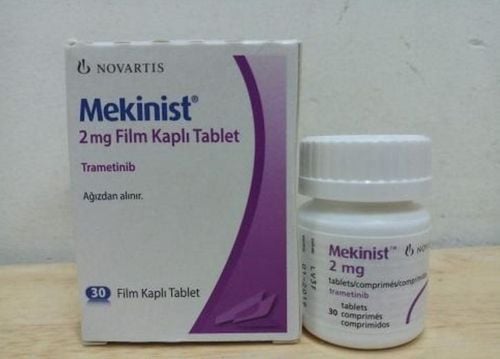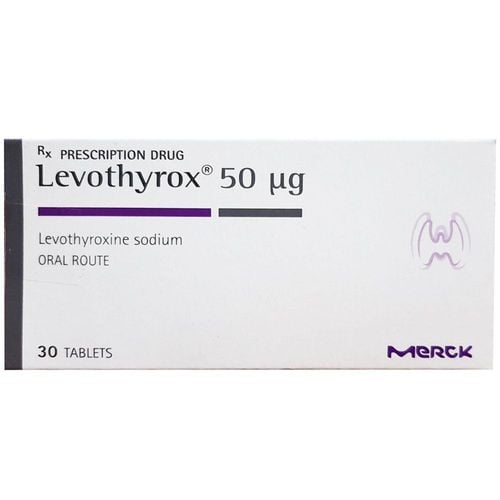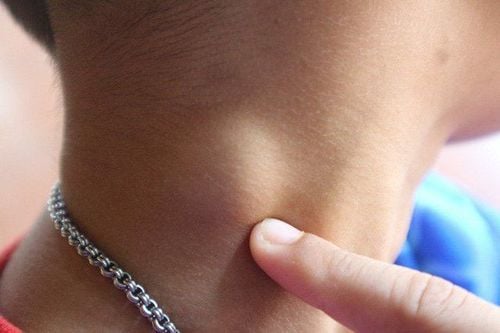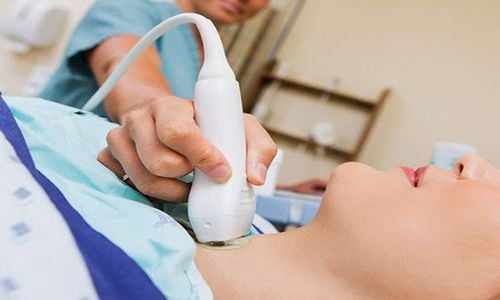This is an automatically translated article.
Cervical lymph node dissection is usually indicated at the same time as thyroid surgery, however, in some cases, cervical lymph node dissection is not performed during tumor resection. In these cases, patients need to conduct lymph node dissection after surgery to limit and prevent metastasis of malignant cells.1. Outline
Thyroid cancer is an abnormal proliferation of malignant cells in the thyroid gland, an uncommon disease with an incidence of 0.7-2.3%. Thyroid cancer has a good prognosis if detected and treated early. If thyroid cancer is detected early and has not metastasized, the surgical method of total thyroidectomy, combined with cervical lymph node dissection, is a highly effective treatment.Cervical lymphadenectomy is surgery to remove lymph nodes limited by the upper jaw angle, below the clavicle, the lateral border of the sternohyoid muscle, the hyoid bone to the anterior border of the trapezius muscle. Usually cervical lymph nodes are removed at the same time as surgery to remove the primary tumor, but there are cases where for some reason the neck lymph nodes are not removed during surgery.
Thyroid cancer cells can invade nearby lymph nodes, then metastasize to other organs of the body and grow. So cervical lymph node dissection helps to prevent and reduce the risk of cancer cells spreading to other areas of the body.
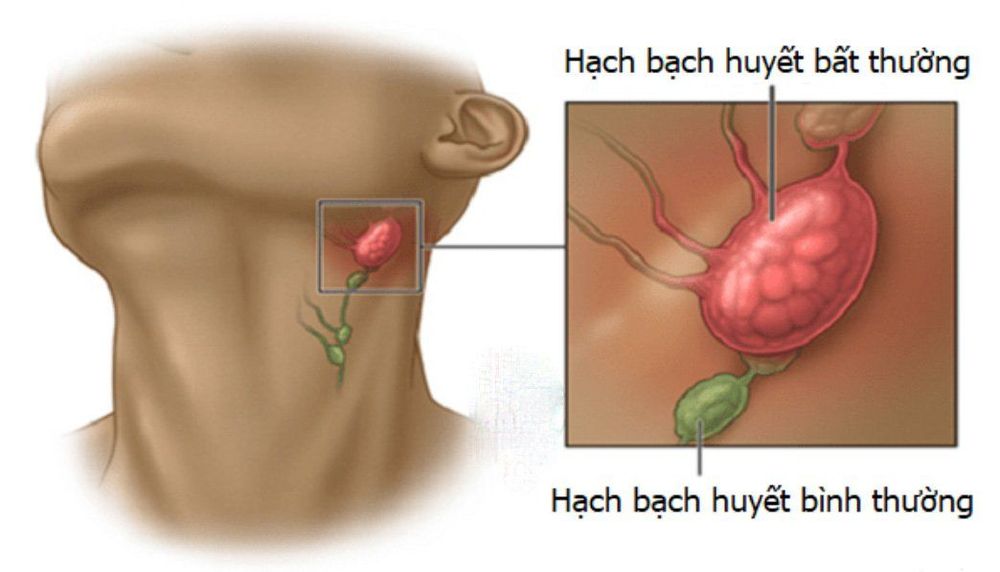
Nạo vét hạch cổ là phẫu thuật nhằm loại bỏ các hạch bạch huyết
2. Cervical lymph node dissection technique in surgical thyroid cancer
2.1 Indications and contraindications
Indications: Patients with total thyroidectomy without lymph node dissection or nodal metastases in the neck after surgery for thyroid cancer.Contraindications: There are no absolute contraindications, so care should be taken when operating for people with poor health, the elderly and chronic diseases.
2.2 Preparation
Performer: The surgical team needs a surgeon, an anesthesiologist, an assistant surgeon and anesthesiologist, nurses and support technicians. Means: Instruments used for anesthesia and surgery, drugs in case of abnormalities occur. Patients: To be examined and explained about the patient's condition, basic tests before surgery. Sedation may be given the night before if needed.2.3 Steps to take
Patient position: Lie on your back, arms outstretched, neck flexed, and pillows under your shoulders to expose the surgical area.Anesthesia: Endotracheal anaesthesia
Initiate the patient's anesthesia with an inhalation anesthetic, an intravenous anesthetic, or a combination of both. After induction of anesthesia, the patient had enough muscle relaxation and enough deep sleep before intubation. Control breathing and monitor the patient's vital signs with a machine. Surgical procedure:
Skin incision: Skin incision is made through the fascia of the neck, just above the anterior jugular veins on the superficial layer of the deep cervical fascia. Lymph node dissection: Central cavity: The inner limit is the tracheal axis and esophagus, the outer limit is the internal carotid artery, the upper limit is thyroid cartilage, the lower limit is the superior mediastinum. Dissection along the path of the recurrent nerve, remove the entire lymph node including the fat tissue from top to bottom, including the anterior and paratracheal nodes. Lateral compartment: Limits to the outside of the internal carotid artery. Remove the entire fat tissue and preserve the sternocleidomastoid muscle, the internal jugular vein, and the X nerve. Proceed to remove the cervical lymph node on the opposite side similarly. Close the skin suture incision: Carry out suturing the lesion and place drainage in the cervical lymph node dissection compartments.
2.4 Follow-up after surgery
Monitor vital signs. Complications after extubation and surgery such as: Bleeding: If there is pink fluid in the drainage vessel after surgery, gradually decrease, after 48 hours or 36 hours, the drainage can be withdrawn. When bleeding, the drainage vessel is full of bright red blood, the blood pressure drops, the patient may be worried, panic, severely disturbed.. Infection: The patient has symptoms of fever, pain in the surgical area. , there is an unusual foul-smelling discharge from the surgical site, and the test shows that there is an infection syndrome. Lymphatic leak: Appearance of white fluid like rice water through drainage to the jar, the amount depending on the case, can be up to 500 ml/day. In complications due to intubation such as: respiratory failure after extubation, laryngitis-bronchitis...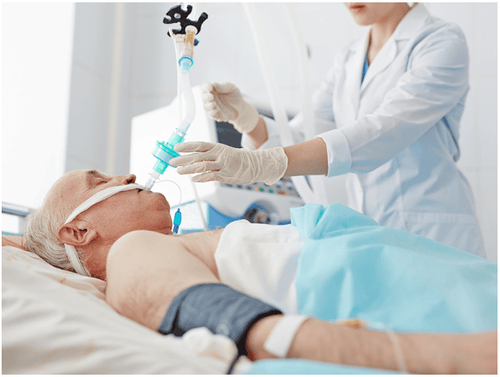
Tại biến do đặt ống nội khí quản như suy hô hấp sau rút nội khí quản
3. Complications and how to manage complications after cervical lymphadenectomy
Bleeding: Bleeding after surgery may occur, to prevent this complication should pay attention to the skin edges and blood vessels in the surgical area. Infection: Patients after surgery need to use antibiotics to prevent infection. When an infection occurs, the patient should be treated with antibiotics according to the results of the antibiogram. Lymphatic leak: after changing the compression bandage and still continuing to drain white fluid, many times, it is necessary to open the surgical cavity to check the chest tube area to clamp and tie. Complications due to intubation Respiratory failure after extubation: There are many causes of respiratory failure after extubation, patients present with cyanotic dyspnea. It is necessary to provide adequate oxygen to the patient, if breathing cannot be spontaneous, mechanical ventilation is required, and the endotracheal tube is reintubated. Hoarseness, sore throat: Usually subsides after a few days. Cervical lymphadenectomy is essential in cases of thyroid cancer that have not yet been dissected or have signs of suspected lymph node metastasis in order to limit the spread of malignant cells to other organs in the body.To treat thyroid cancer with the most effective radical neck lymph node dissection, patients should choose reputable and quality medical centers. Vinmec International General Hospital gathers a team of famous doctors and nurses in the industry, with good expertise, rich experience, heart and vision. Not only domestic doctors, there are also foreign doctors from Japan, Singapore... helping patients access new and effective treatment regimens from countries with developed medical backgrounds. In the world.
In addition, the system of facilities here is very modern. The machines are all imported, new and high quality, effectively supporting the doctor's diagnosis and treatment process faster and more effectively. To register for examination and treatment at Vinmec International General Hospital, you can contact the nationwide Vinmec Health System Hotline, or register online HERE.
In April & May 2021, when there is a need for thyroid cancer examination and treatment at Vinmec Times City International General Hospital, customers will enjoy double incentives:
- Free specialist examination and 50% off Thyroid Cancer Screening Packages such as:
+ Standard Thyroid Screening Package
+ Advanced Thyroid Screening Package
+ Special Thyroid Screening Package
- 50% off cost for customers with only post-examination treatment. The program is limited to the corresponding technique of each hospital and to customers who perform this treatment technique for the first time at Vinmec.




